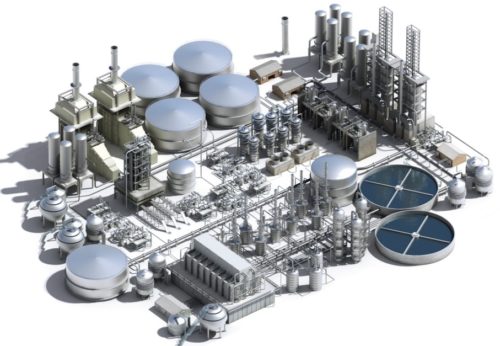Learning lessons and taking back control
While we are still embroiled in the battle to contain and defeat COVID-19, nobody truly knows the eventual outcomes, but we can begin to assess the impacts and respond positively to change.
The impact of the COVID-19 pandemic has varied enormously, with some companies massively increasing production, some re-purposing their plants to new demands or opportunities; while others are having to prioritize for survival and damage limitation, furloughing or even laying off staff as production is halted. With a global recession predicted, it is vital that we assess the learnings and take back control. There is no way back!
The pandemic has transformed the nature of work. The challenge for new homeworkers hasn’t been how to work effectively, but how to ensure they maintain a quality home life. The reduction in travel has increased productive working hours and all this could have an irreversible effect on our car and aerospace industries: but our environment and well-being are benefiting already.
Digital adoption?
Massive and unpredicted consumer demand spikes have challenged production and logistic capabilities, particularly those based on rigid pre-planning. The next phase of the pandemic will call for increases in automated testing, sample preparation and laboratory analysis and then, when clinical trials are successfully concluded, there will be increased demand for vaccine and drug production.
These may be extreme examples, but they highlight the increasing need for production agility across manufacturing; the ability to cope with rapid changes in demand through a fast reacting supply chain. These aren’t the only characteristics that align to Industry 4.0. The rate of digital adoption as a result of the pandemic is being massively accelerated.
The UK Government’s Ventilator Challenge showed what can be achieved in an incredibly short space of time. In a matter of days, it required designers to meet strict regulatory requirements in a complex, high dependency, medical device. What did it take to compress the development process from years to days?
- A common sense of purpose created engagement and a determination to succeed. While commercial organizations are not going to create the same imperative as an impending health disaster, leaders can consider the parallels in creating effective cross-team collaboration.
- An effective project management office, bringing together all stakeholders, including suppliers, to determine the best way forward. The value of this was especially in the early stages where they could have the greatest positive impact.
- Breaking down silos, creating flexibility and collaboration within teams of specialists working to a common agenda. This allowed experts with the many years’ experience, knowledge and skills to “roll up their sleeves” and be directly engaged in the process. It resulted in a ‘dream team’ approach and delivered the results needed.
- The adoption of virtual meeting and project management tools like MS Teams enabled the storage and real-time sharing of critical data as well as the ability to conduct meetings throughout the project duration. Teams working in shifts could continue to drive developments 24/7.
As the ventilators moved from design projects to production, the ability of companies to re-tool and re-purpose their facilities came to the fore. Manual assembly is highly flexible, but it cannot achieve the efficiency of automation. The valiant efforts of individuals and organizations making medical masks has helped to plug critical shortfalls; but highly automated, local plants would be a far more effective long-term solution to deliver the required quantities at the right price, quality and speed.
To conclude, automation provides resilience to disruption. Bringing processes and control closer to market needs further protects production. This won’t just be ‘pandemic proof’ production: it will increase output agility and protect organizations from single source of supply bottlenecks. It will put us back in control.
This article originally appeared on Control Engineering Europe’s website.
Original content can be found at Control Engineering.
Do you have experience and expertise with the topics mentioned in this content? You should consider contributing to our CFE Media editorial team and getting the recognition you and your company deserve. Click here to start this process.


